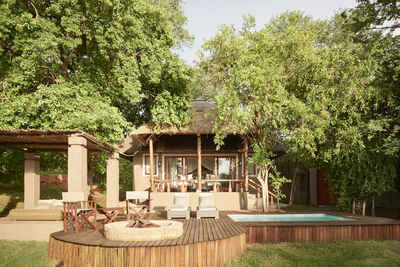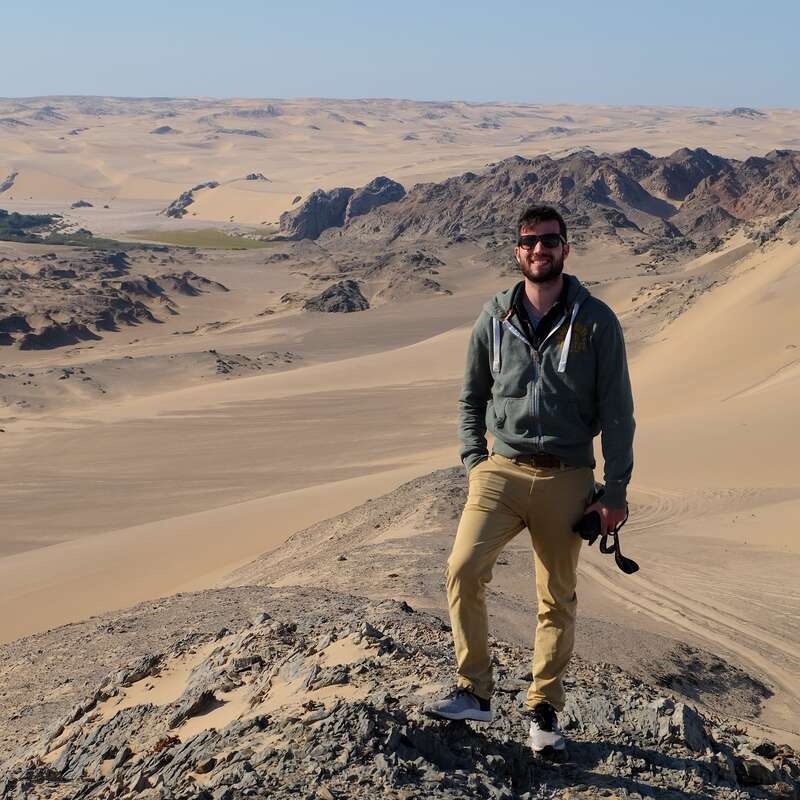About Chobe Chilwero
Chobe Chilwero is a sophisticated lodge perched on a hill near Kasane, bordering the Chobe National Park.
The views from here stretch over the Chobe River to Namibia and the floodplains that emerge when water levels drop.
Chobe National Park may not be exclusive, but Chobe Chilwero is. This luxurious lodge offers high levels of service, excellent food and an array of facilities we'd expect in a good hotel. It may not suit the traveller looking for a more traditional safari experience, but we think it will appeal to those looking to avoid the larger hotels in Kasane, but still wanting to indulge themselves for a few days.
Our view
Chobe National Park may not be exclusive, but Chobe Chilwero is. This luxurious lodge offers high levels of service, excellent food and an array of facilities we'd expect in a good hotel. It may not suit the traveller looking for a more traditional safari experience, but we think it will appeal to those looking to avoid the larger hotels in Kasane, but still wanting to indulge themselves for a few days.
Accommodation
15 suites
Children
Best for 12+
Open
All year
Activities

4WD Safari

Birdwatching

Boat trip

Fishing

Helicopter

Private activities
Traveller reviews of Chobe Chilwero
3 real, un-edited reviews from Expert Africa's travellers.
Arrived 22 Sep 2022, 2 nights
"Chobe Chilwero our destination dream"
Overall rating: Excellent
Arrived 14 Nov 2016, 2 nights
"Chobe Chilwero review"
Overall rating: Excellent
Arrived 11 Jun 2015, 2 nights
"Chobe Chilwero"
Overall rating: Excellent
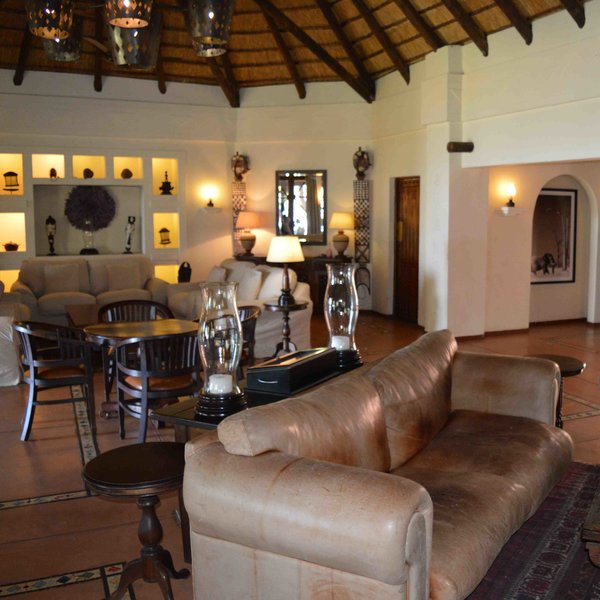
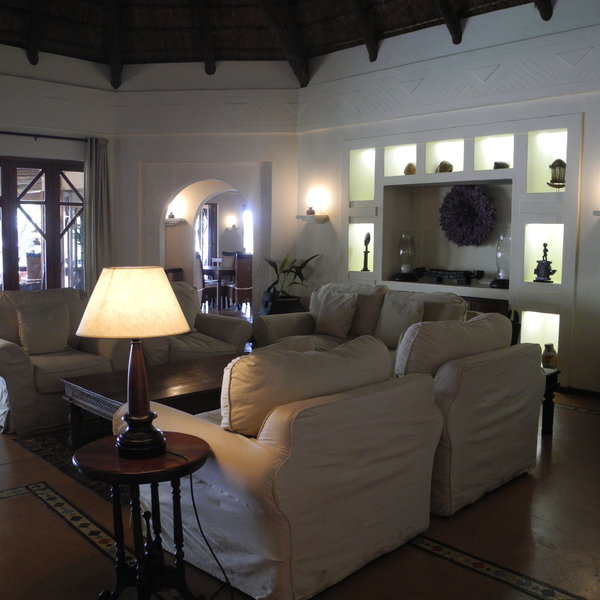
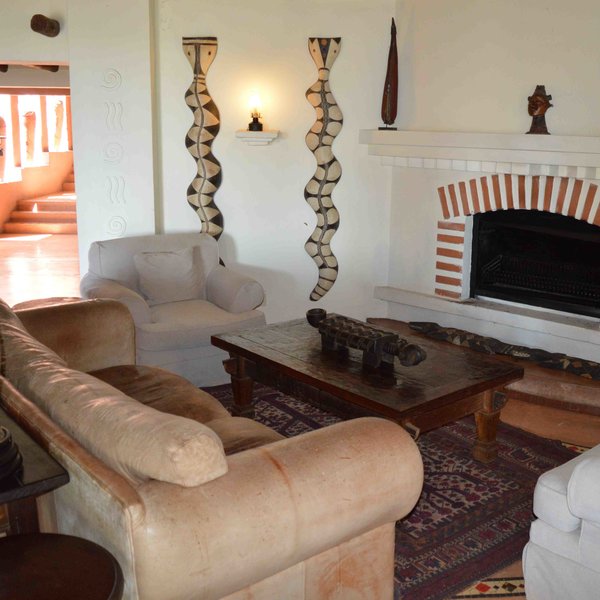
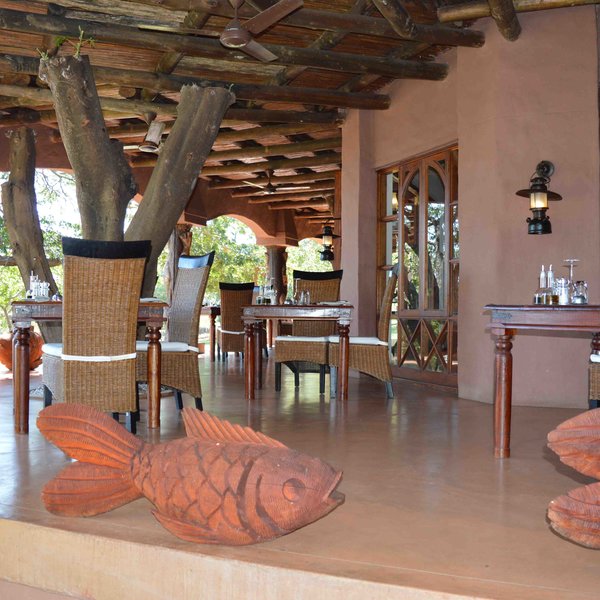
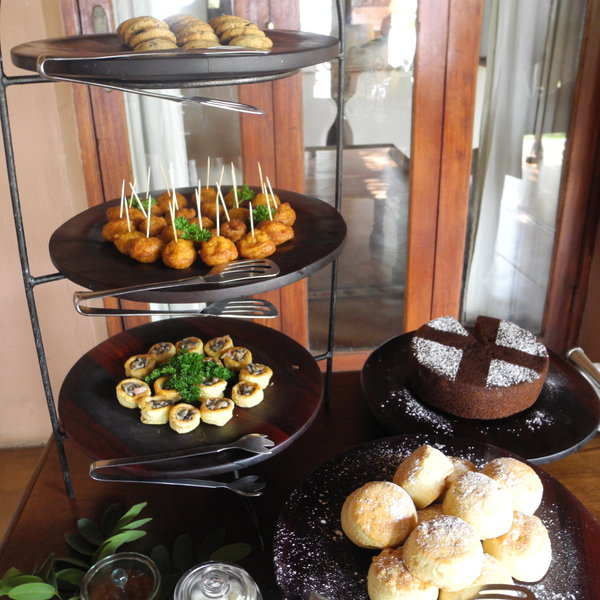
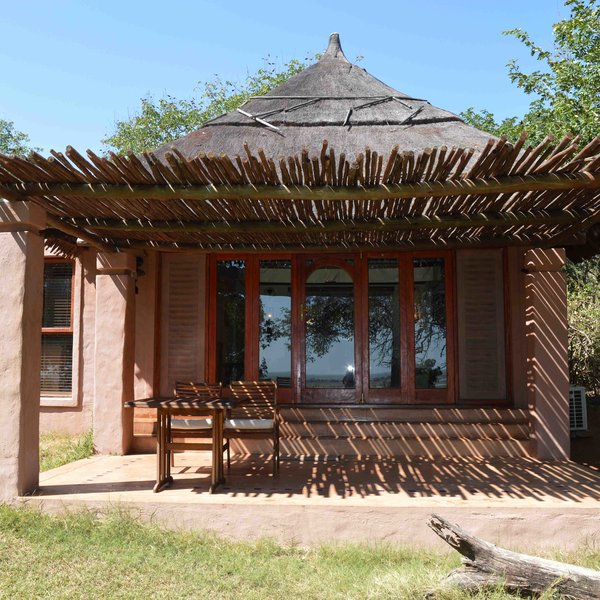
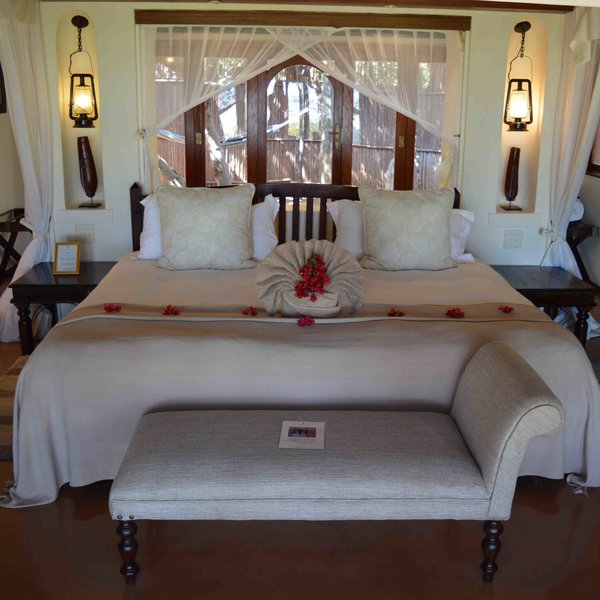
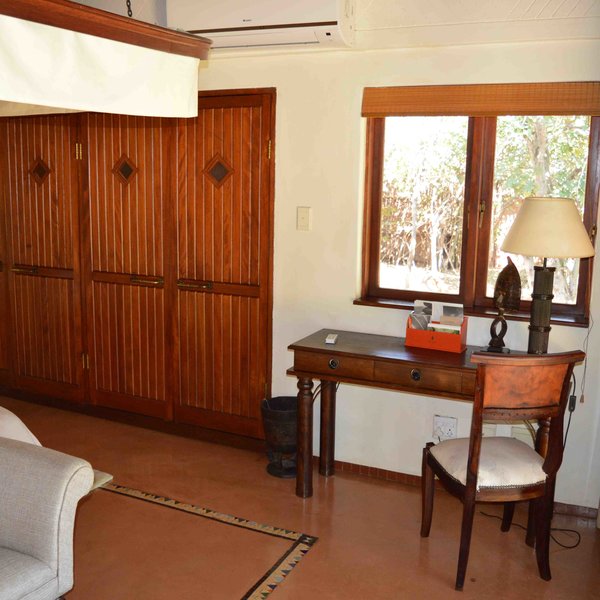
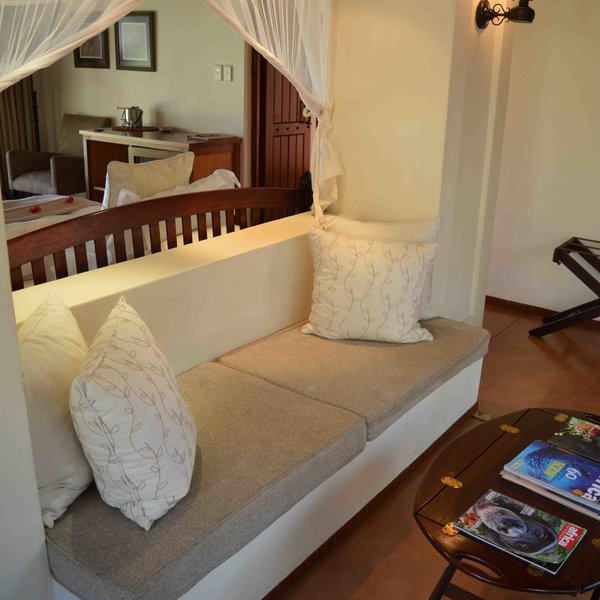
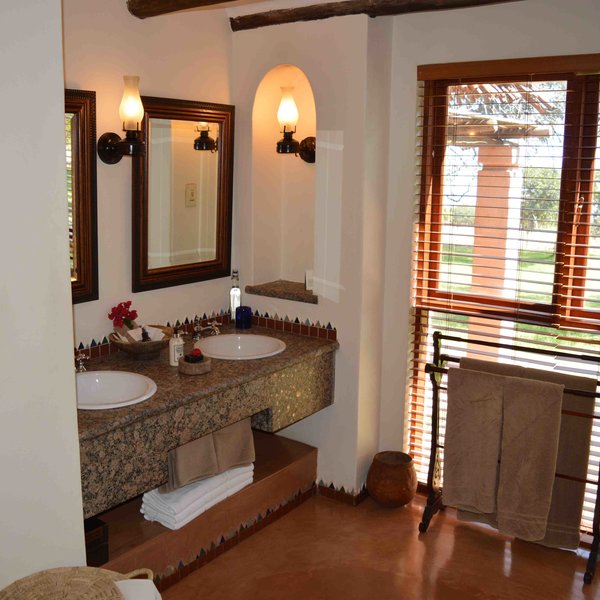
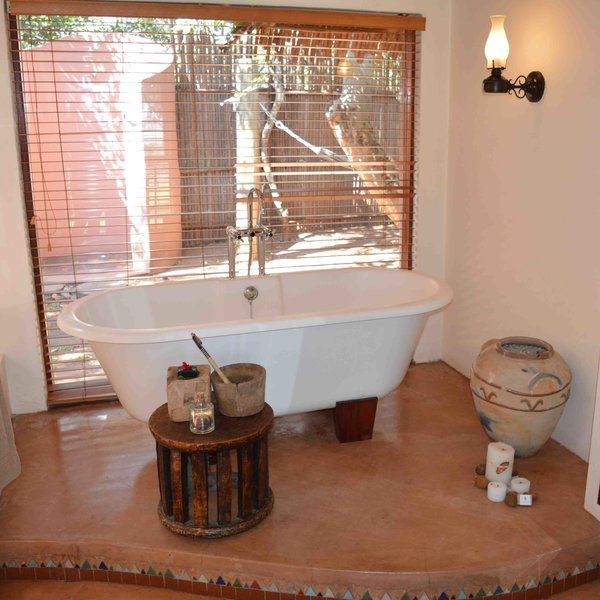
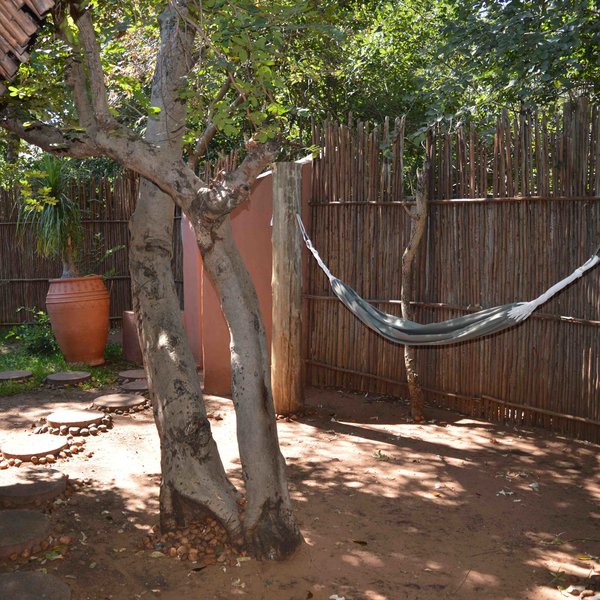
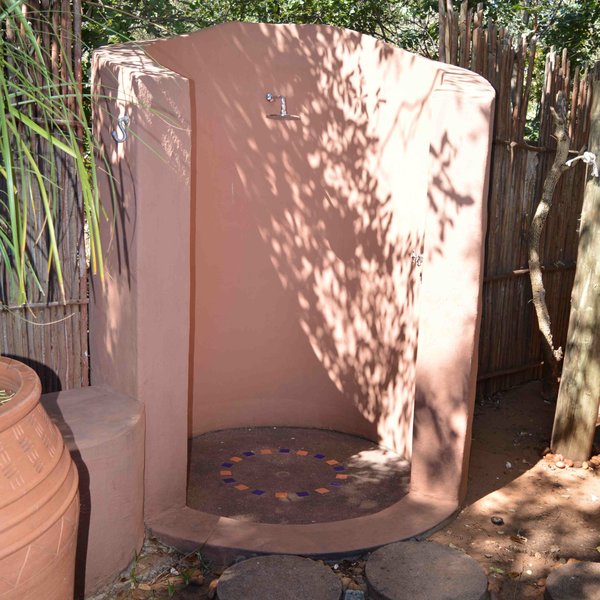
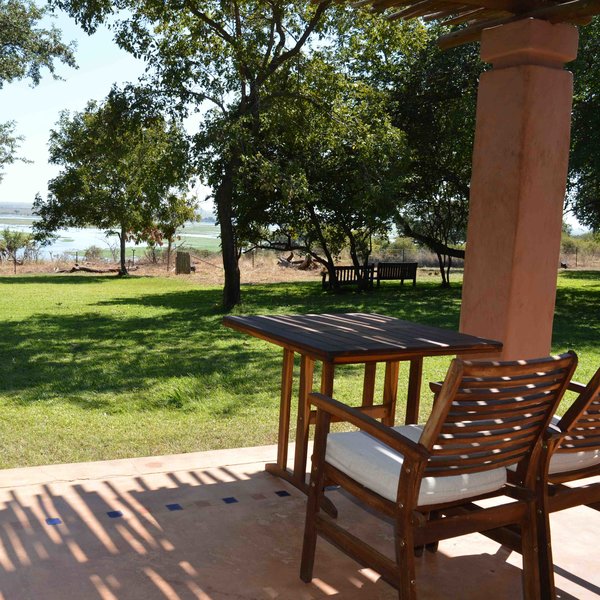
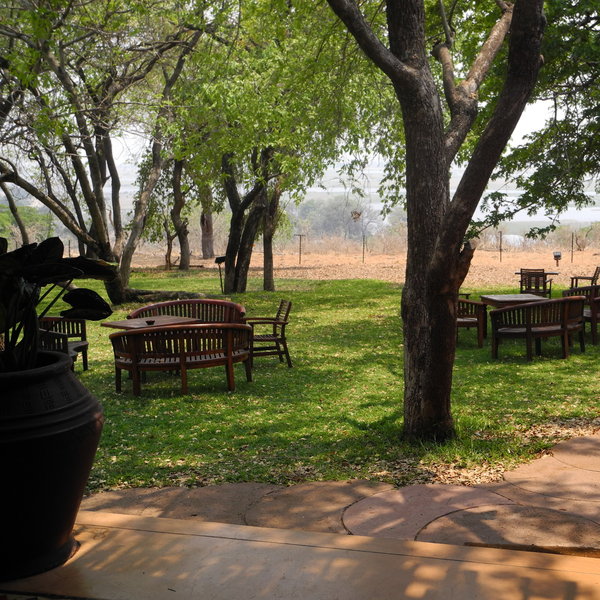
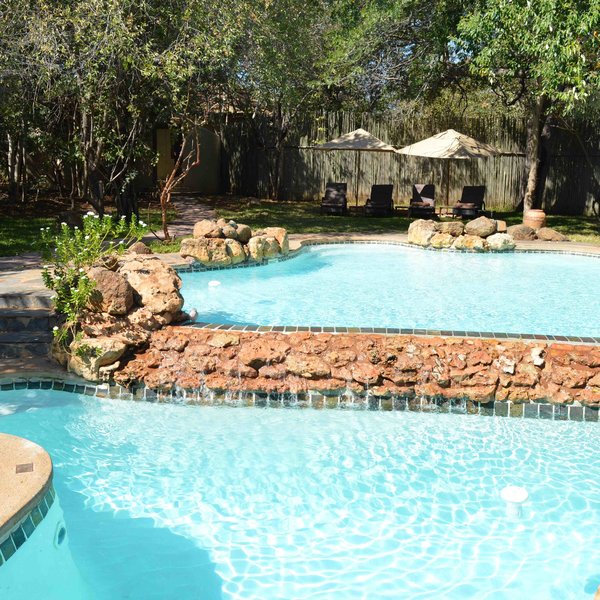
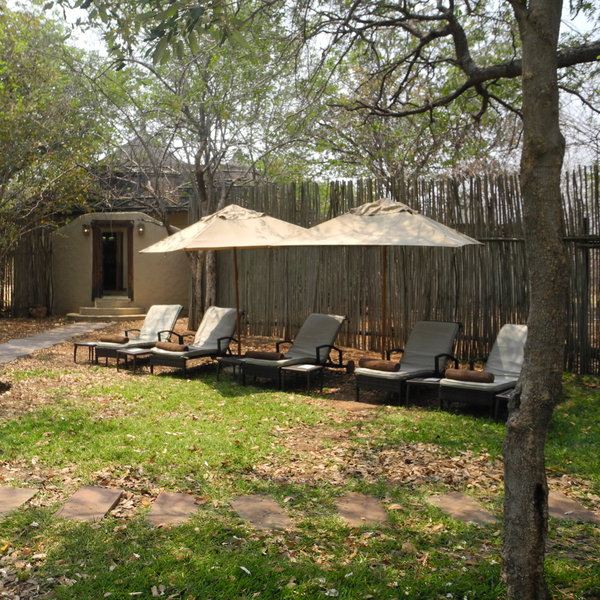
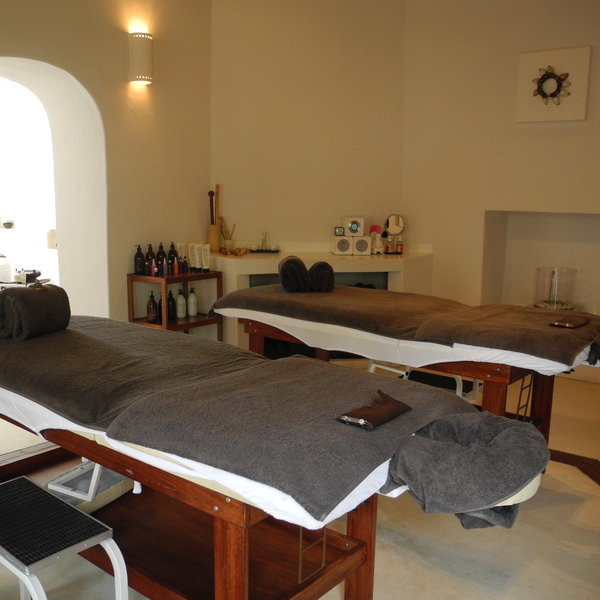
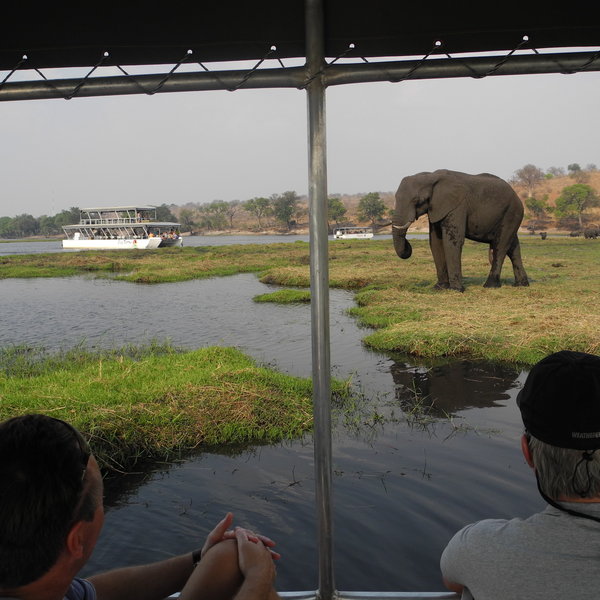
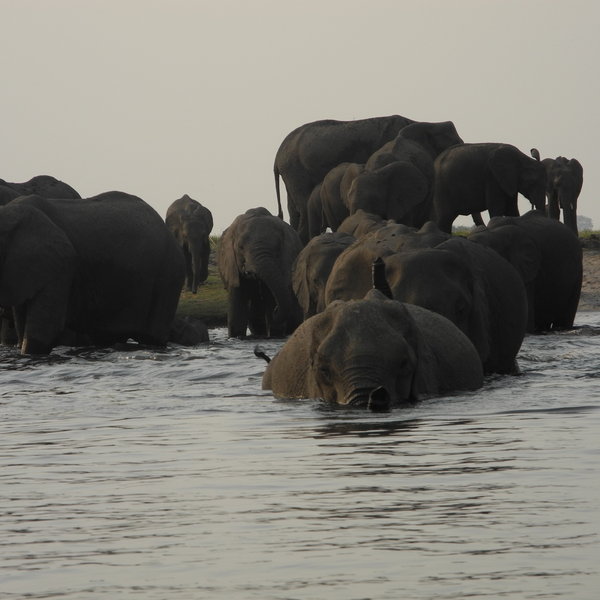
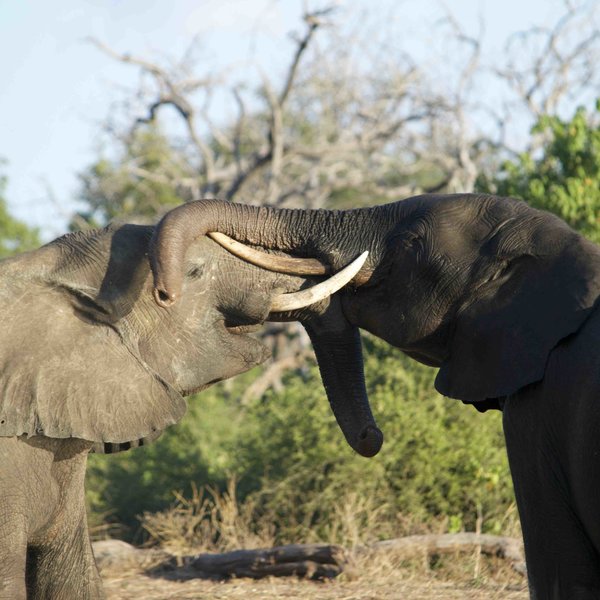
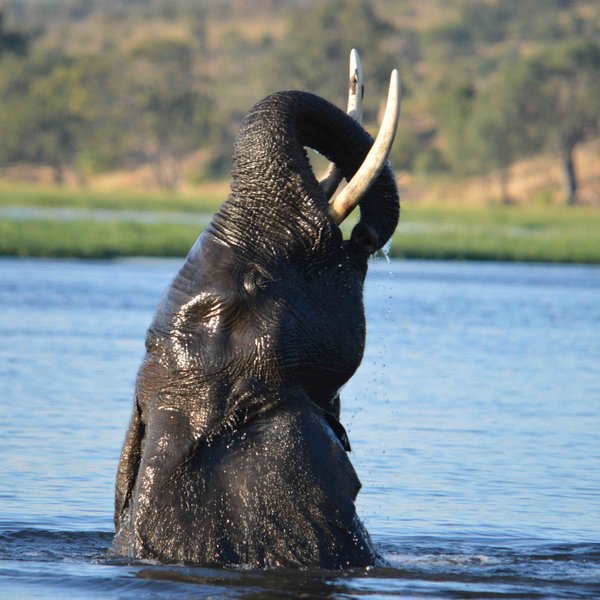
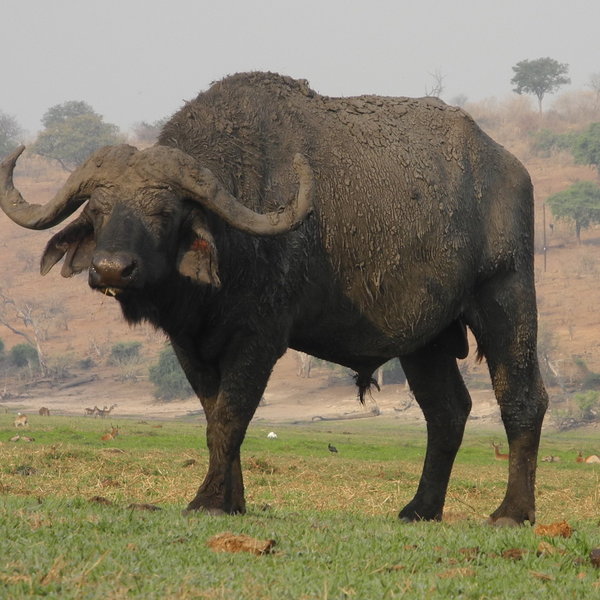
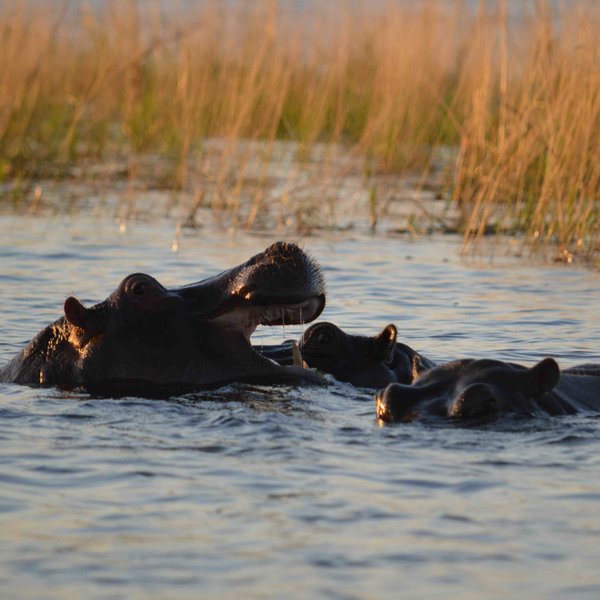
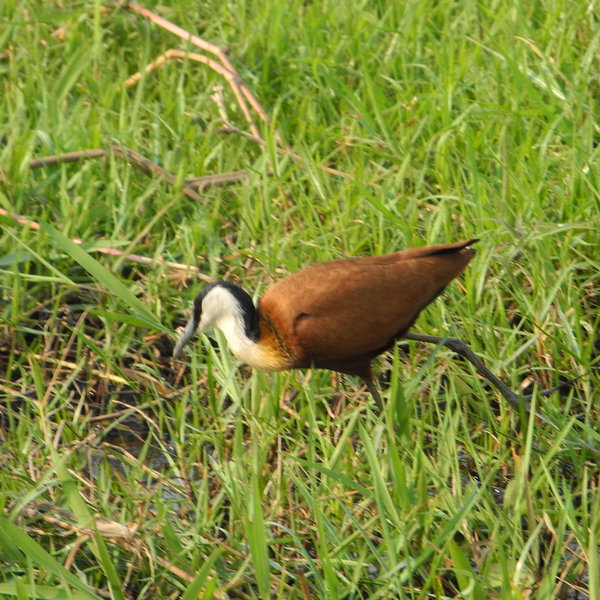
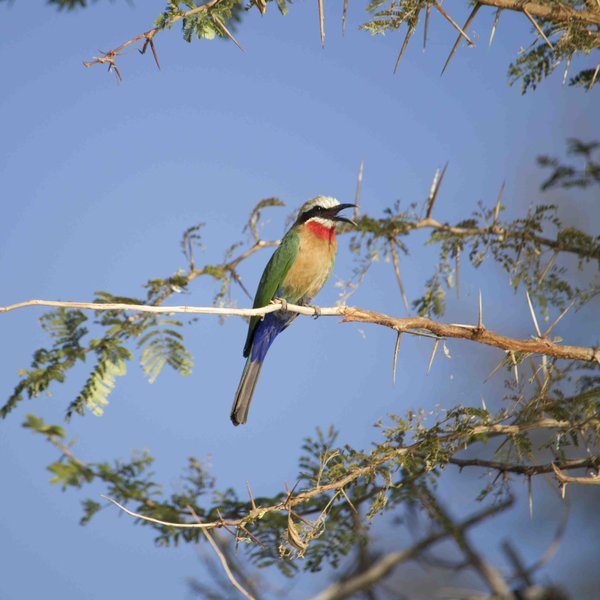
Expert Africa's gallery
When we travel we take lots of photos ourselves to give you a real and un-edited view of the safaris. See our 36 pictures and 1 videos of Chobe Chilwero to get the candid view.
View galleryChobe Chilwero: Our full report
Chobe Chilwero is a sophisticated lodge perched on a hill near Kasane, bordering the Chobe National Park.
The views from here stretch over the Chobe River to Namibia and the floodplains that emerge when water levels drop.
The main area at Chobe Chilwero is a rather rambling complex with a large and exceptionally elegant lounge. To one side is a small library where, along with a selection of books and board games, you'll find a big-screen television hidden discreetly behind cupboard doors. But in pride of place, with views onto the gardens and beyond to the river, is the dining room, where guests may eat either indoors or out on the covered veranda. In addition there’s a well-stocked curio shop, and a discreet 'communications centre', where WiFi – which only works in this part of the building – is available to guests. The entire lodge has the feel of an exclusive country-house hotel – quite a step away from the usual bushcamp/lodge feel that you get elsewhere.
Even during the dry season, the grounds at Chobe Chilwero feel like an oasis of green, thanks to an electric fence that generally prevents errant elephants from trampling the manicured lawns. Thankfully, it's low enough at the front of the lodge not to detract from the views, though it’s not totally effective: on our last stay we were taken a very long route from the dining area to our suite in order to avoid a grazing elephant!
A short walk from the main area, and behind the split-level pool, is a well-equipped spa featuring a wide selection of products and treatments from both the Thalgo and Africology ranges. While not for everybody, a half-hour massage at the end of a safari can be a very welcome treat.
Chobe Chilwero's 15 brick and thatch suites are light, luxurious and exceptionally spacious. Large glass doors look out onto the lawn to the front, and to a private walled-in garden at the back – complete with an outdoor shower and hammock. The suites are stylish and luxuriously appointed with air conditioning, double or twin beds, writing desk, dressing table, minibar fridge, plenty of storage space and a seating area. The en-suite bathroom is no less spacious, with a free-standing bathtub big enough for two, a shower, his and hers basins and a separate toilet.
Activities centre on 4WD game drives, as well as boat trips on the Chobe River, usually in the afternoon. There is the potential for some exceptional big-game and predator sightings in the Chobe riverfront area, particularly during the dry months between around July and October, when water sources in the interior of the park dwindle and wildlife is drawn to the permanent waters of the Chobe. Our last visit was in the month of May – before Chobe’s peak game-viewing season – yet there were still animals to see and the park was quieter than later in the year. We enjoyed watching the elephant interaction at the edge of the water, and the birdlife was entrancing, with a variety of kingfishers, and carmine bee-eaters nesting on the banks, colouring otherwise brown trees with their vibrant red.
On previous visits to Chobe Chilwero in September the riverbanks were teeming with life. We lost count of the elephants, and there were buffalo lounging on the lush grass plains that are revealed as water levels fall. The birdlife was phenomenal, too – and some even seemed quite relaxed; we came within a metre of several African jacanas and a white-fronted bee-eater perched on a branch overhanging the water. Or perhaps we were lucky!
No matter what time of year you visit, don't expect to have sightings along the riverfront to yourself; this is a busy area, even more so than parks such as Moremi, in part because of its reasonably good infrastructure and proximity to Kasane and the Victoria Falls. In addition, do note that strict park rules mean that no night drives, walks or off-road driving are allowed and the roads along the riverfront, as well as the river itself can get quite crowded.
Because of this, we would normally suggest starting your Botswana safari in the Chobe area, before moving to the less busy parks and reserves. However, after a week or two in more remote areas, Chobe Chilwero could also be a good place to end a safari.
Activities
4WD Safari
Birdwatching
Boat trip
Fishing
Helicopter
Private activities
Families & children
- Attitude towards children
- Children of all ages are welcome, although families with children of five years and younger will need to book and pay for private activities, which will be at the discretion of management. Children aged 15 years and younger must share a suite with an adult.
- Equipment
- The suites are large enough for children to share comfortably without being cramped, and cots can be provided on request. Childminding is offered, but note that the minders are members of the housekeeping staff and are not qualified babysitters. Child-friendly menus are available and evening meals can be served earlier than normal mealtimes.
Children receive a backpack with a colouring book of animals, colouring pencils, water bottle, torch and children's binoculars. The lodge offers guided walks within the grounds of the lodge to collect pods, leaves and seeds, and to learn about animal identification. - Generally recommended for children
- We think that Chobe Chilwero has a slightly more adult atmosphere, however children with a keen interest in the natural world are welcome here.
- Notes
- Dangerous wildlife wanders through the grounds and the pool is unfenced; children must be under the constant supervision of their parents.
Food & drink
- Usual board basis
- Full Board & Activities
- Food quality
- The food at Chobe Chilwero when we stayed there last, was excellent and difficult to fault.
Guests are woken up with a tray of tea or coffee. A varied breakfast buffet, available before heading out on the first activity of the day, includes cereals, fresh fruit, pastries, cold meats, cheeses, bread, yoghurt and dried fruit. There is also the option of a cooked breakfast, made to order.
Lunch – usually a choice of two or three plated dishes – is served between midday and 2pm, so there is a degree of flexibility. We thoroughly enjoyed the sweet potato and coconut soup, but could also have opted for smoked salmon, rocket and cucumber salad. Our main course options were pan-fried tuna and vegetables (which we chose and enjoyed), an impala steak, and a vegetarian quiche. To round it off there was a delicious berry and apricot tart, a cheeseboard or even ice cream!
Afternoon tea, served just before heading out on the afternoon activity, was a treat of fresh scones with cream and jam, fruit skewers, homemade chocolate finger biscuits, banana cake or mushroom tartlets.
This was accompanied by hot tea or coffee, iced tea or coffee, lemonade or a berry smoothie.
After pre-dinner drinks with canapes in the lounge, we sat down to dinner. Guests will usually have a choice of two or three dishes for each of the three courses. The evening we were at Chilwero the lodge put on a traditional barbecue with a large selection of meats accompanied by various salads, and a malva pudding with custard and fruit skewers for pudding. - Dining style
- Individual Tables
- Dining locations
- Indoor and Outdoor Dining
- Further dining info, including room service
- There is no room service at Chobe Chilwero
- Drinks included
- Bottled water, soft drinks, local beers and spirits and a limited selection of (usually) South African red and white wines are included. Champagne and imported wines and spirits will cost extra and should be requested in advance to check availability.
Our travellers’ wildlife sightings from Chobe Chilwero
Since mid-2018, many of our travellers who stayed at Chobe Chilwero have kindly recorded their wildlife sightings and shared them with us. The results are below. Click an animal to see more, and here to see more on our methodology.

100% success

100% success

100% success

100% success

100% success

100% success

100% success

0% success

0% success

0% success

0% success

0% success

0% success

0% success

0% success

0% success

0% success

0% success
Getting there
- Location
- Chobe National Park, Botswana
- Ideal length of stay
- Two or three nights, ideally at the start or end of your safari in Botswana, especially between July and October when game densities tend to be higher in this area.
- Directions
- It's roughly a ten-minute drive from Kasane International Airport to Chobe Chilwero.
- Accessible by
- Fly-and-Transfer
Communications
- Power supply notes
- Chobe Chilwero is connected to the mains power supply from Kasane.
- Communications
- Telephone, fax and email are all available at Chobe Chilwero, which also has cellphone coverage as well as WiFi in the reception area. Guests are asked to respect the enjoyment of other guests and only to use cellphones in the privacy of their suites.
- TV & radio
- There is a television in the library.
- Water supply
- Mains
- Water supply notes
- All suites have plumbed hot and cold running water for showers, and flushing toilets. Each room is also provided with glasses and bottled drinking water that is replenished daily. We don’t recommend that travellers drink from the tap.
Health & safety
- Malarial protection recommended
- Yes
- Medical care
- The managers are first-aid trained. The nearest doctor is in Kasane, about ten minutes’ drive from Chobe Chilwero.
Childcare: Chobe Chilwero offers child minding on request. Please note that the minders are members of the housekeeping staff, and are not qualified babysitters. - Dangerous animals
- High Risk
- Security measures
- There is a low electrified fence to deter elephants and a security guard at the main entrance to the grounds. Guests are escorted to and from their suites after dark. There is a telephone in each suite to call reception in case of need, and an air horn to raise the alarm in an emergency.
- Fire safety
- There are fire detectors and fire extinguishers at the suites and in the main areas, as well as fire hoses.
Useful info
- Disabled access
- On Request
- Laundry facilities
- A full laundry service is included.
- Money
- There are safes in all the suites. No exchange facilities are offered.
- Accepted payment on location
- MasterCard and Visa credit cards are accepted; Diners and Amex are not. Cash payments may be made in the form of South African rand, GB sterling, US dollars, euros and Botswana pula.
Plan and book your trip with Expert Africa
All of our trips are tailor-made, so we'll always adapt them to suit you. Talk to an Expert and let us plan and arrange your perfect trip.

Talk to an Expert
Call or email us now! We’ll match you with the Specialist in our team who is best suited to help you. Then together we can start planning your trip.

Set up your itinerary
Based on our experience and your ideas, your specialist will create a detailed, costed itinerary. We’ll refine it together, until we have a trip that you’re perfectly happy with.

Prepare for your trip
The same Specialist will make the seamless arrangements for your trip, send you detailed travel documents, and be available to answer any questions before you depart.

Travel with peace of mind
After you set off, you’ll be cared for by our partners in Africa, most of whom have worked with Expert Africa for decades. And if you ever need us urgently, we’re available 24/7.

When you return
We love to learn about your trip, and so will always be grateful if you’ve the time to give feedback to your Specialist when you return.
Chobe Chilwero's location
Look closer at the environment and surroundings of Chobe Chilwero.
Excursions from Chobe Chilwero
Optional extra day-trips and excursions possible whilst you're staying at Chobe Chilwero. Talk to us: these are usually best arranged before you go.
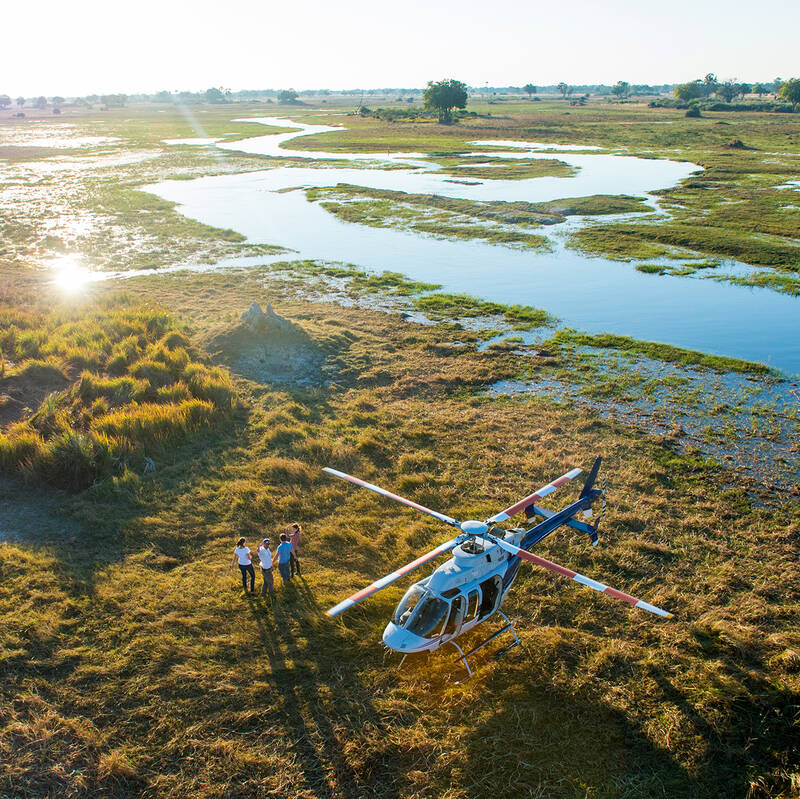
Helicopter Flight - Botswana
Various: from 30 minutes to half a day.
Low-flying, agile and offering superb views, helicopters are an ideal way to move around the Okavango Delta.You can use them instead of fixed-wing inter-lodge transfers or as an addition to other wildlife watching activities, and of course, helicopters can hover to allow that perfect pic, whereas fixed-wings can’t.
More about Helicopter FlightOther lodges in Chobe National Park
Alternative places to stay in this same area.
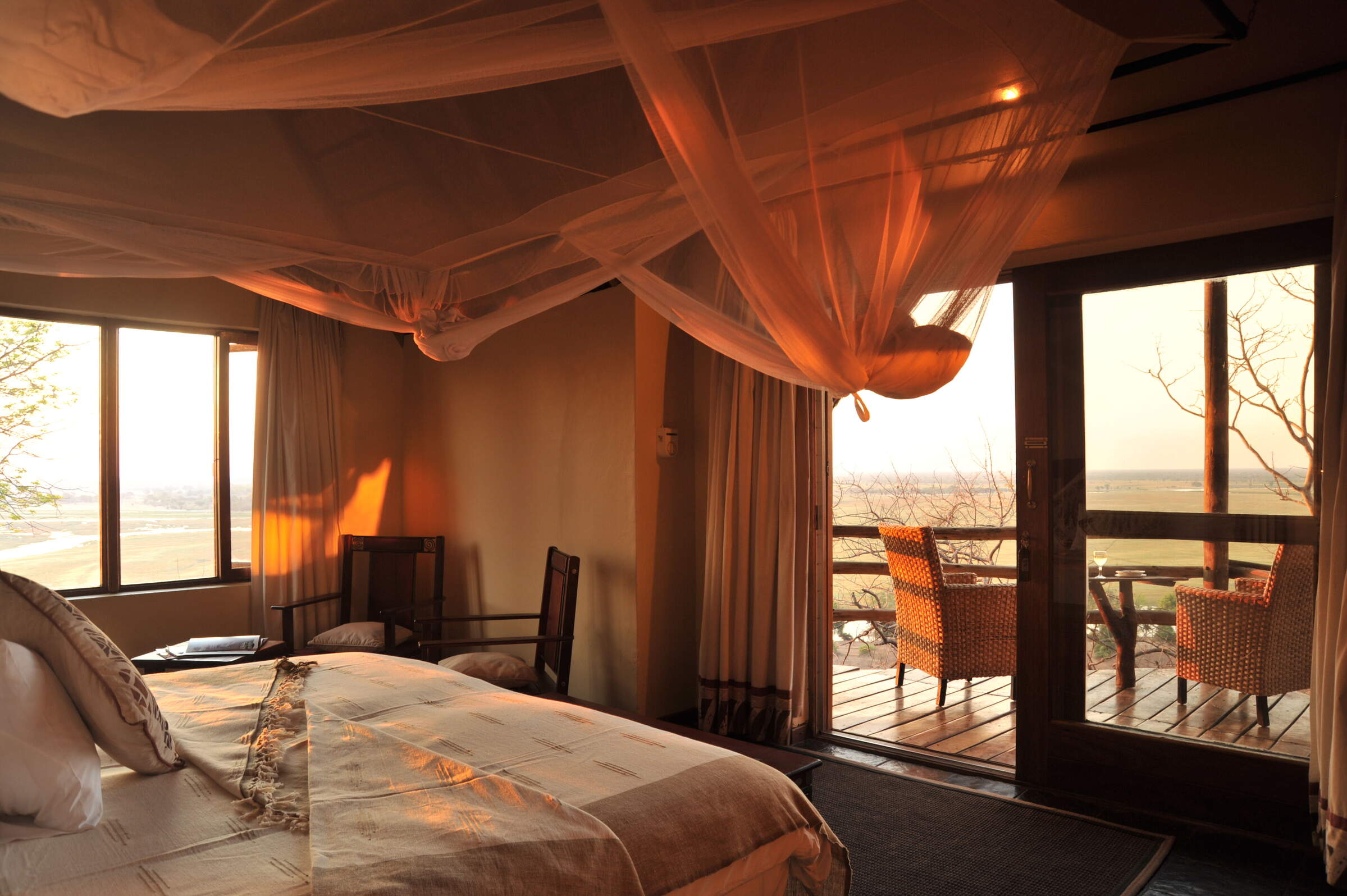
Muchenje Safari Lodge
One of our favourites in the area, Muchenje is a small, welcoming lodge at the quieter, western end of the Chobe Riverfront.
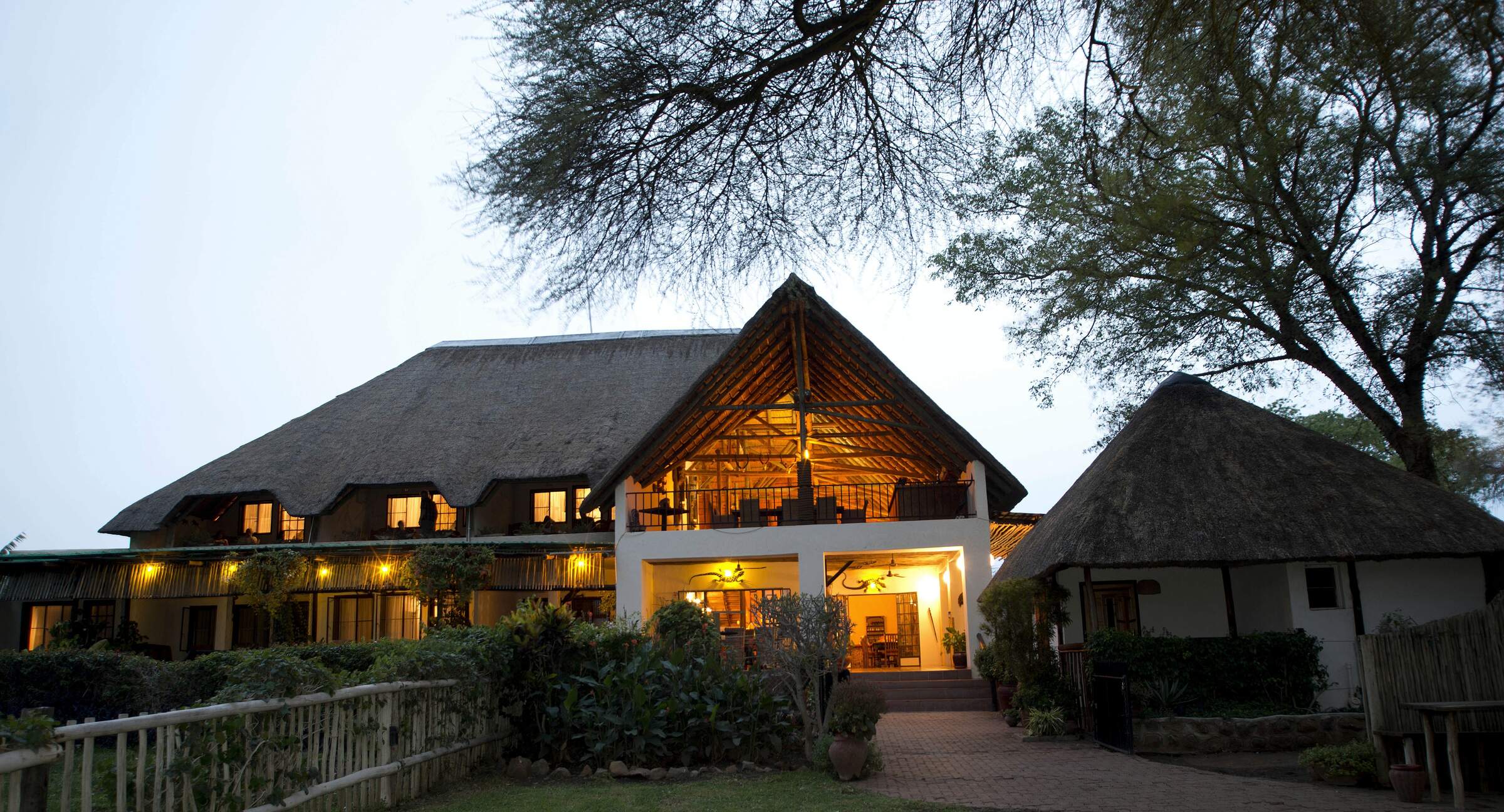
Chobe River Lodge
Overlooking the Chobe River, the intimate Chobe River Lodge is a haven of tranquillity away from the bustle of Kasane.
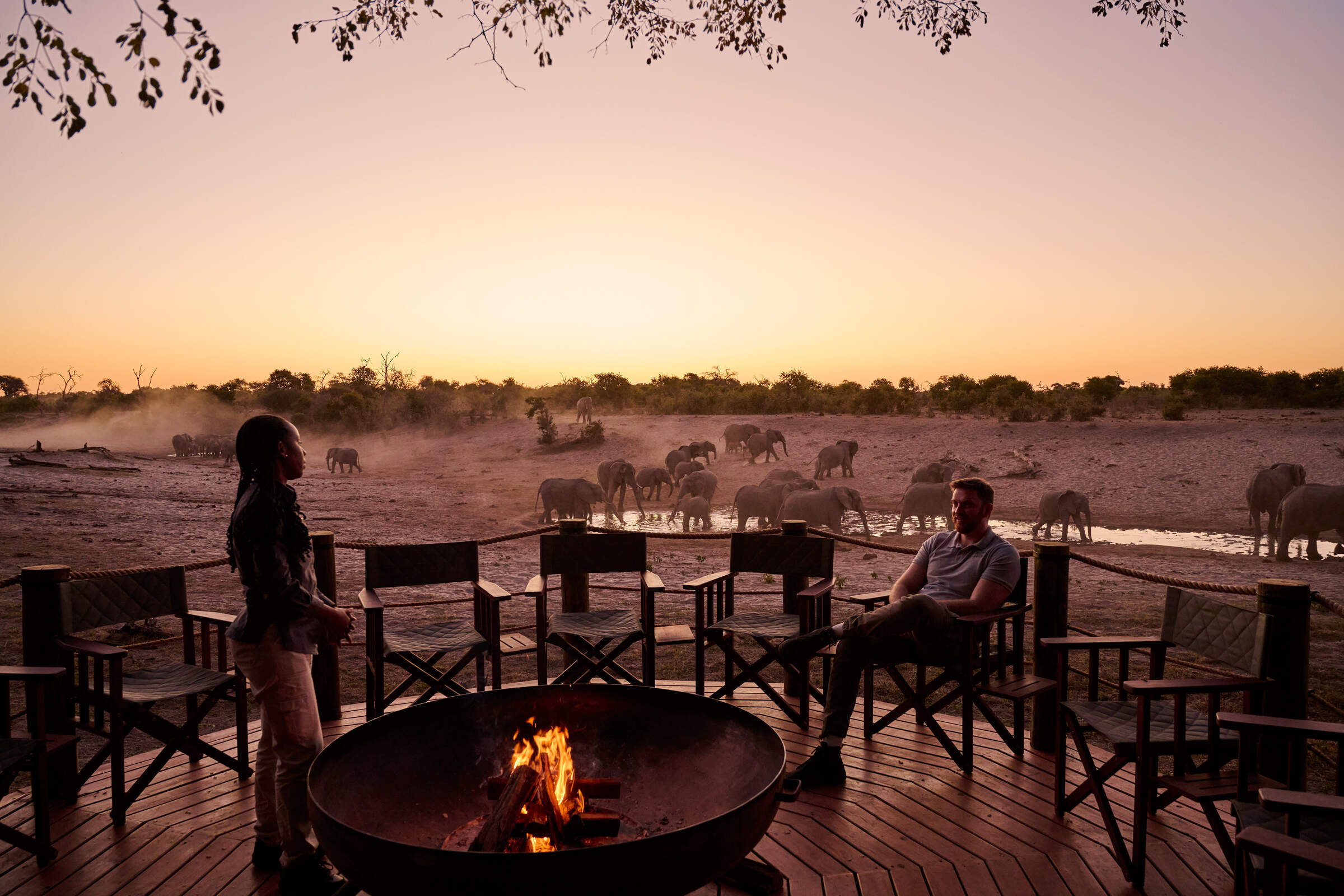
Savute Safari Lodge
Savute Safari Lodge sits on the banks of the Savuti Channel within Chobe National Park, and offers access to excellent game viewing, especially during the dry season.
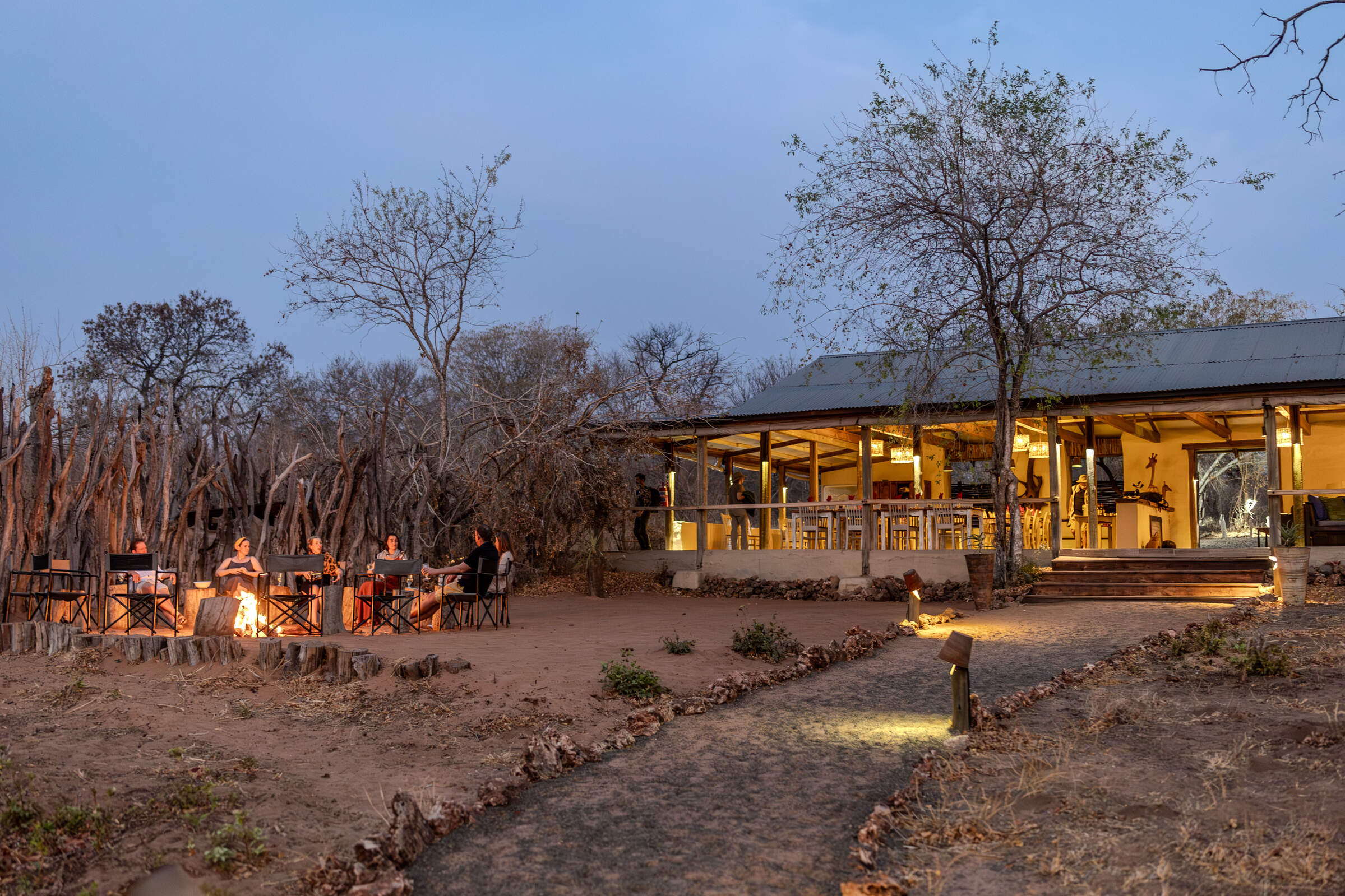
Chobe Elephant Camp
Located in one of our favorite areas of Chobe National Park, Chobe Elephant Camp is a simple but well-appointed camp with a strong bush feel.
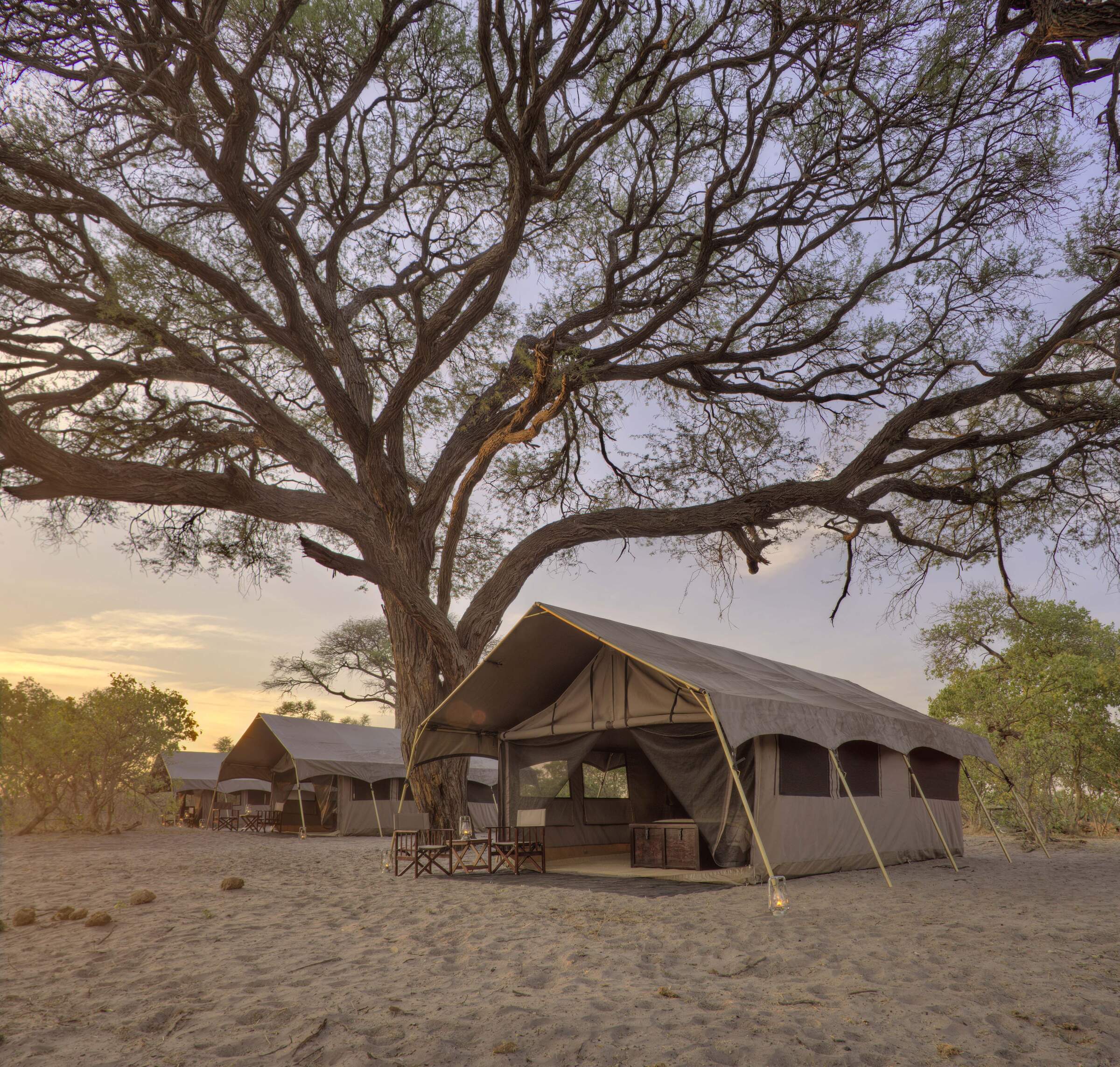
Savute Under Canvas
A mobile camp with the comforts of a semi-permanent tented camp, Savute Under Canvas offers guided game drives within the Savuti region of Chobe National Park.
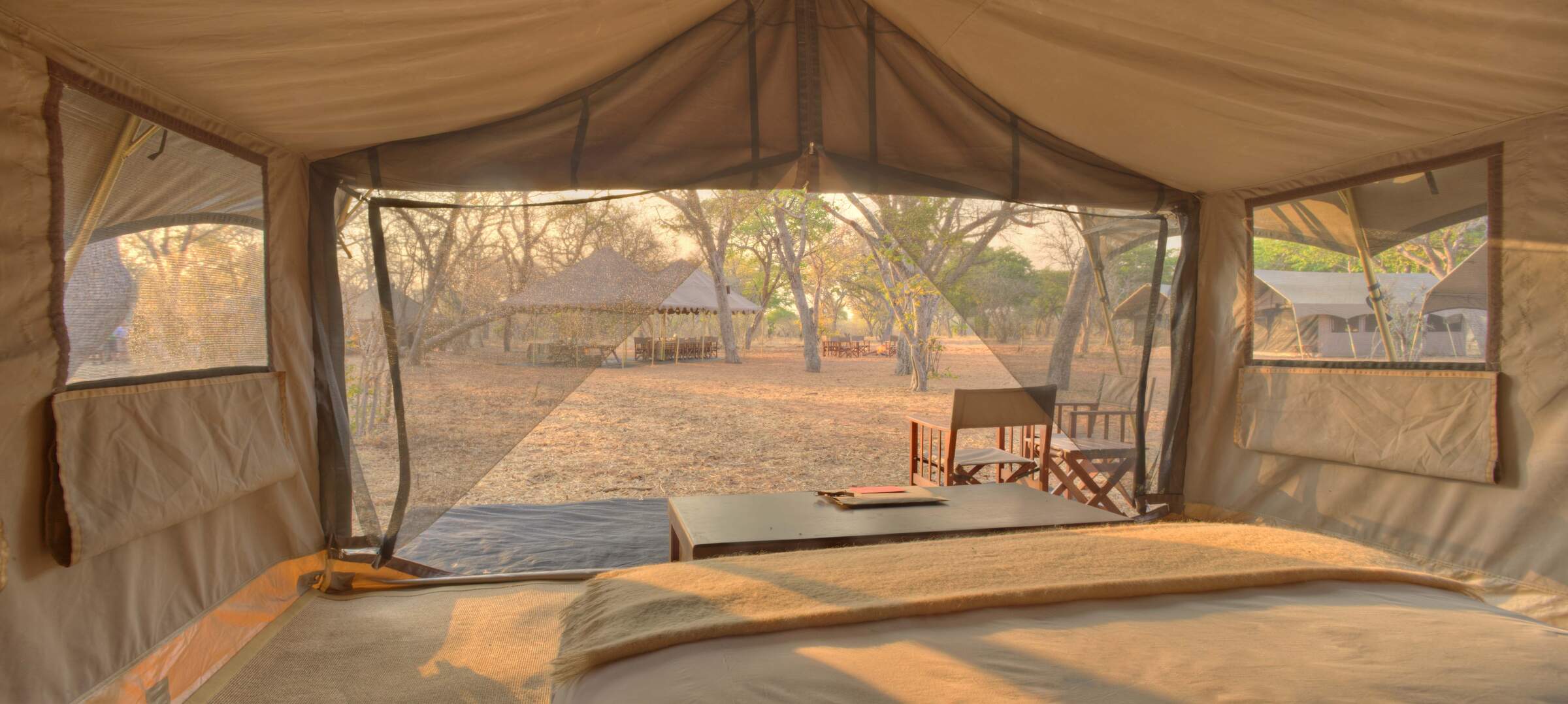
Chobe Under Canvas
This is a typical location for Chobe under Canvas, a small, semi-permanent camp in the Chobe Riverfront area that offers good value for money and high standards of care.
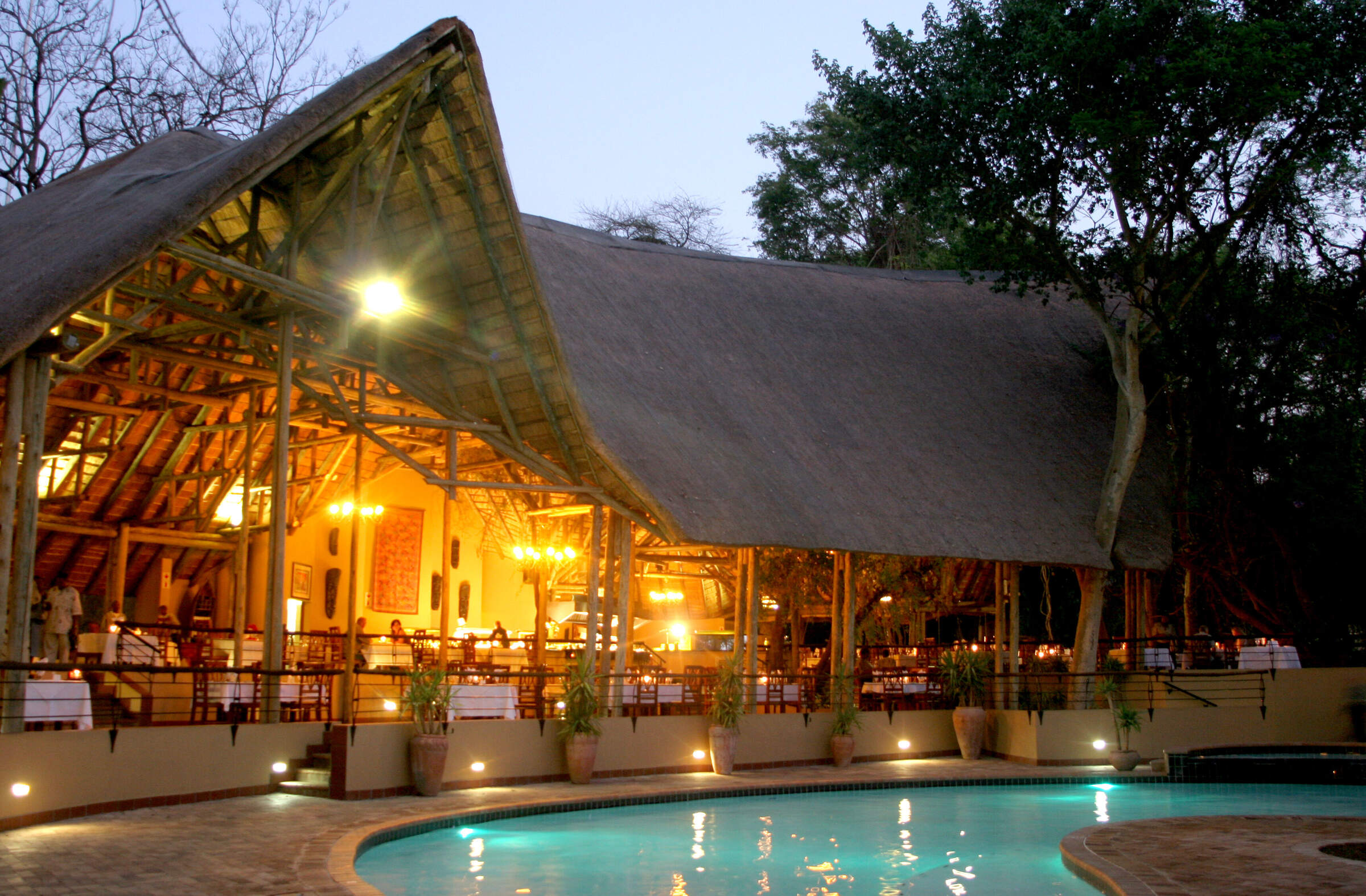
Chobe Safari Lodge
Chobe Safari Lodge is a good value, hotel-style lodge in the heart of Kasane offering game drives, boat cruises and fishing trips.
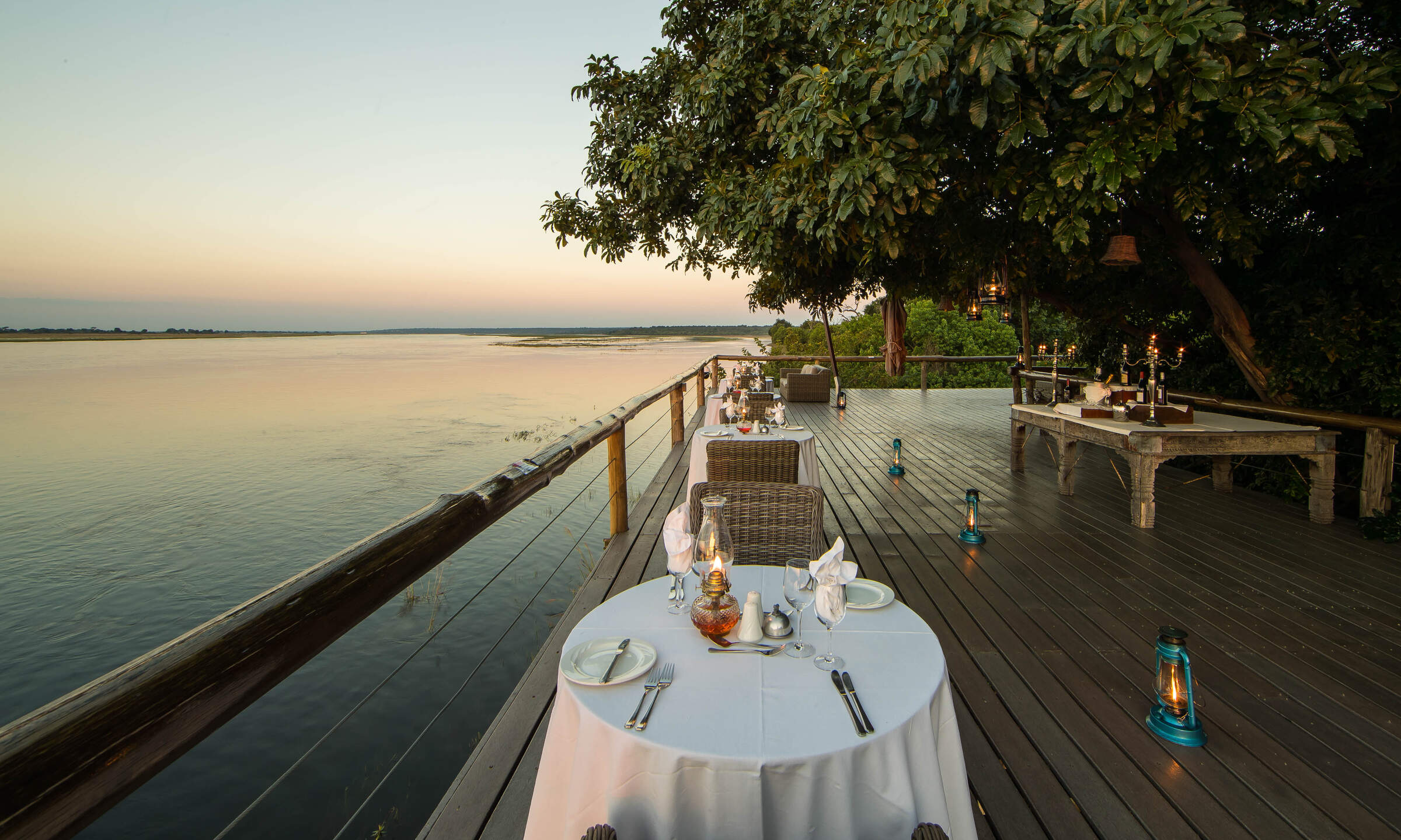
Chobe Game Lodge
Chobe Game Lodge occupies an enviable riverfront location within Chobe National Park and boasts well-earned 'eco' credentials, as well as an excellent all-female guiding team.
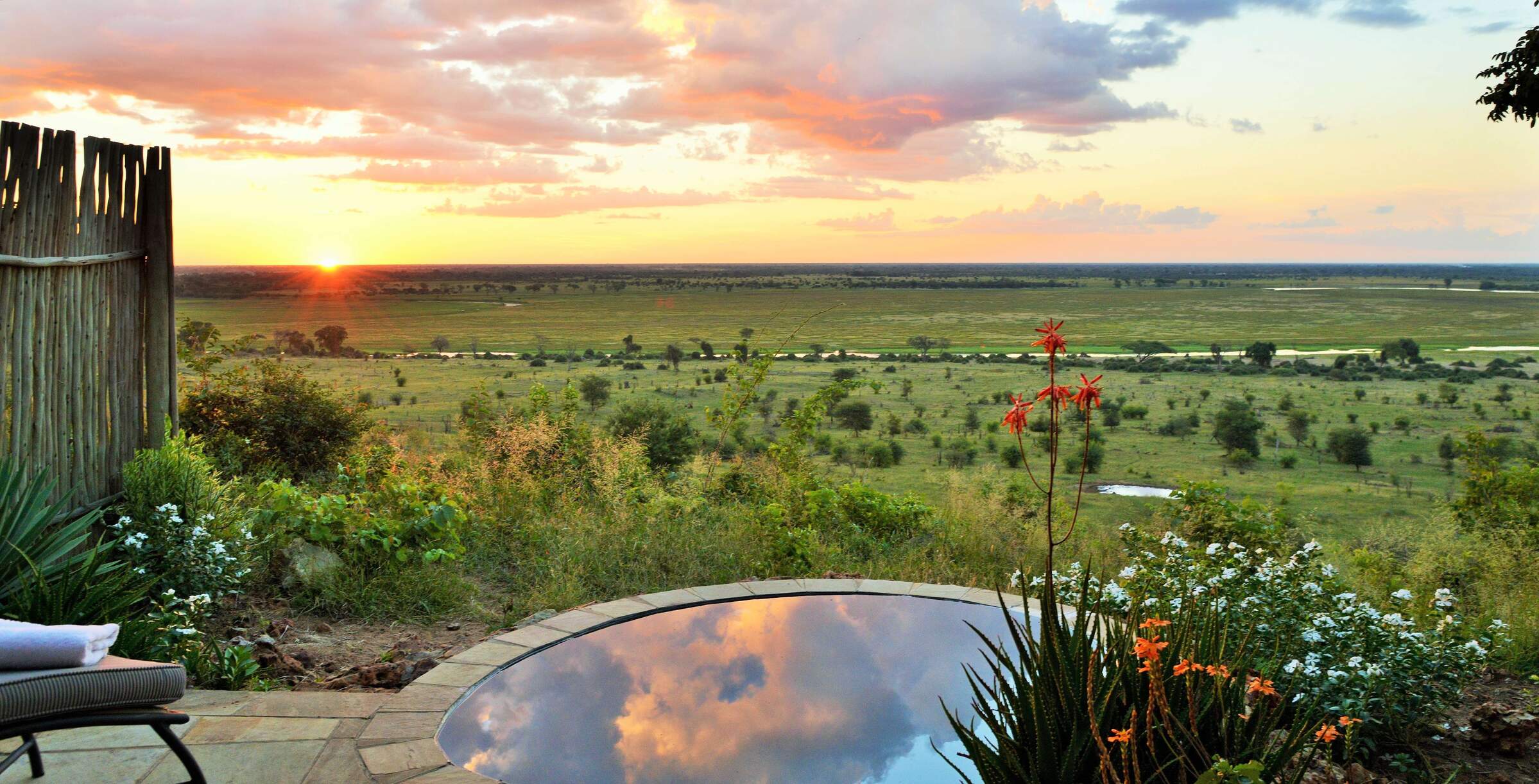
Ngoma Safari Lodge
With sweeping views across the floodplains of the Chobe River, Ngoma offers superb food and flexible safari activities.
Closed for refurbishment 5 Jan - 28 March 2026
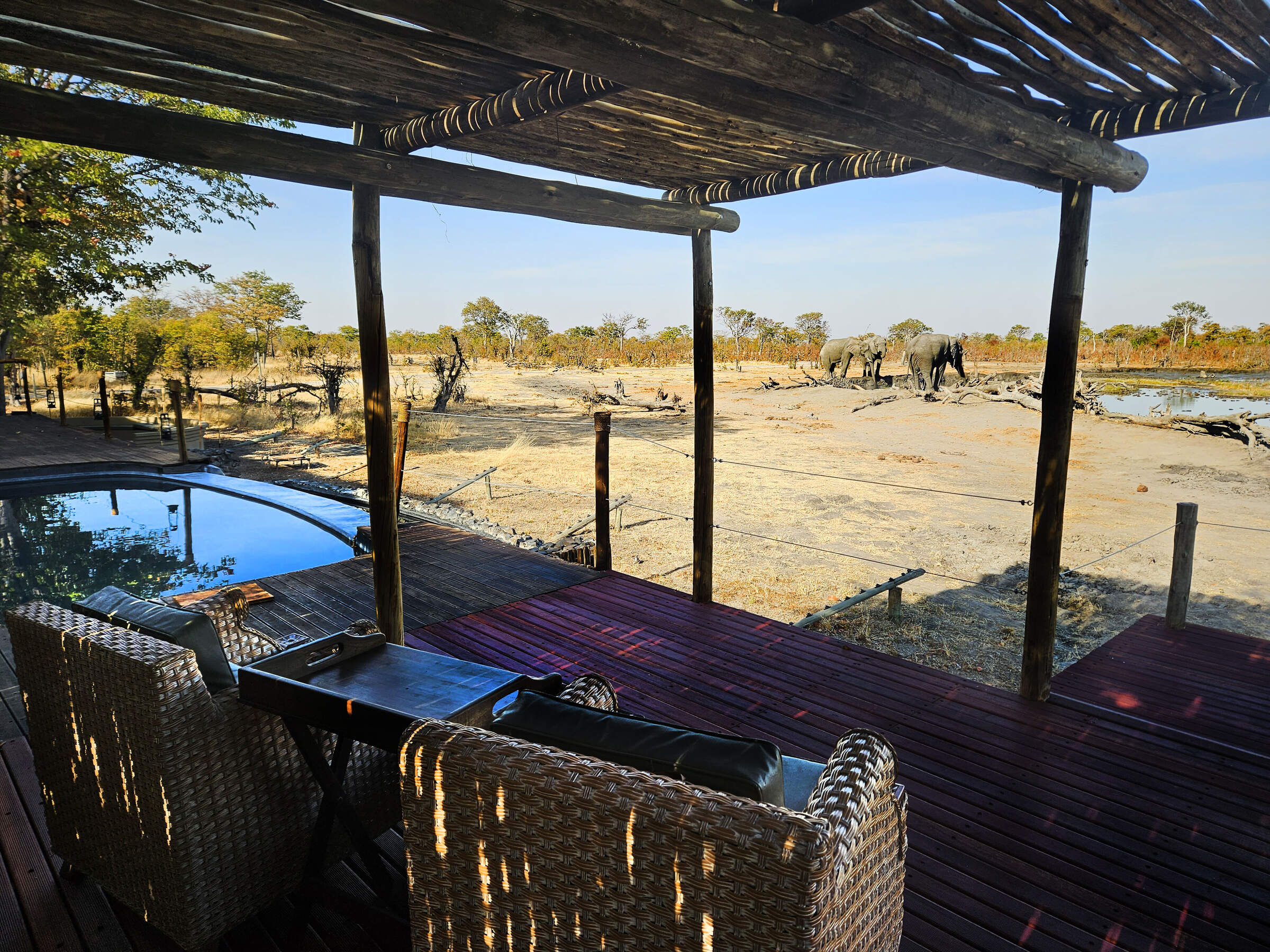
Camp Kuzuma
Camp Kuzuma sits in the Kazuma Forest Reserve and is an excellent place to see elephant in particular. Away from the busier riverfront area of Chobe National Park this camp offers a luxurious base form which to explore this less visited region of northern Botswana.
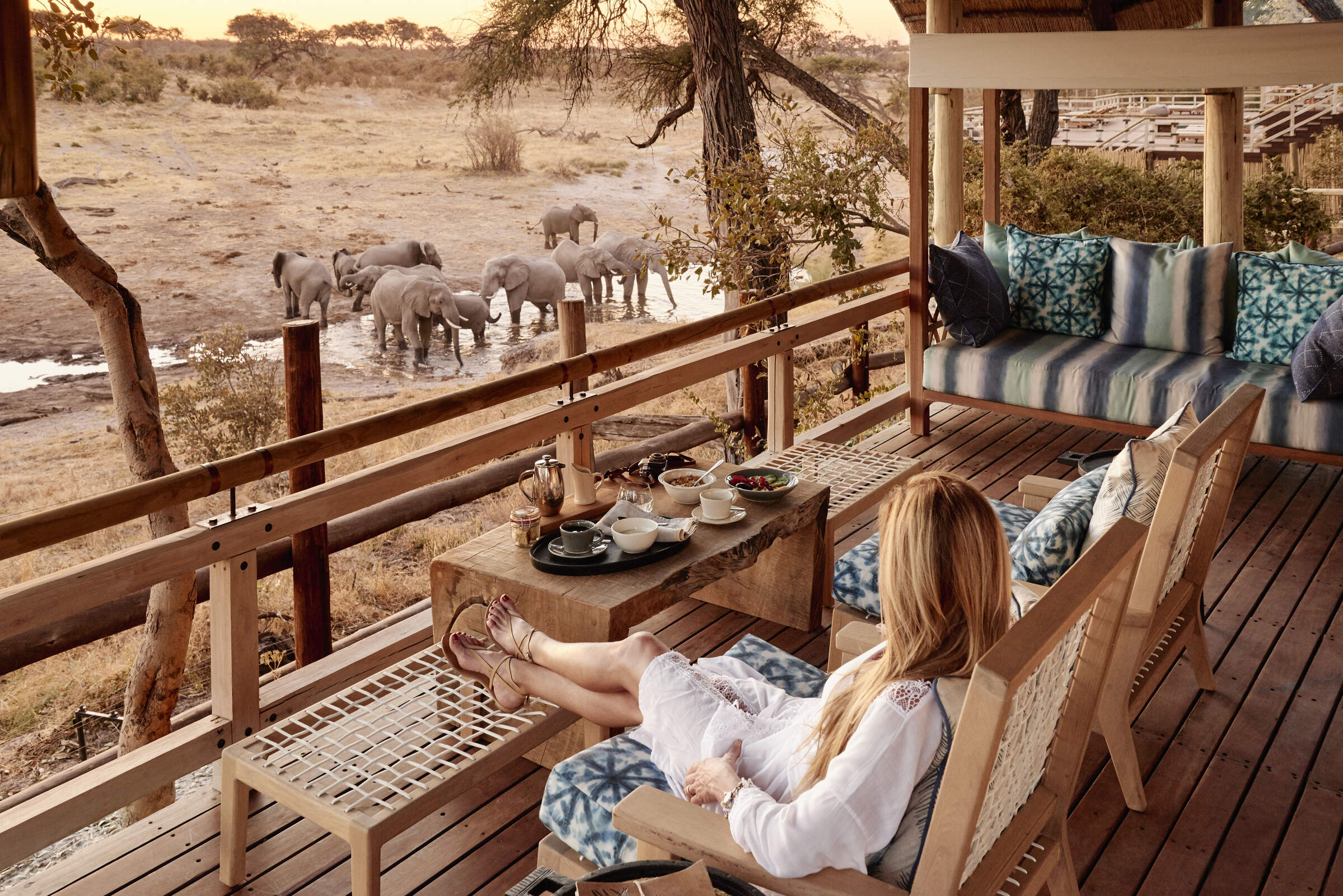
Savute Elephant Lodge
Savute Elephant Lodge is a luxurious camp on the banks of the now flowing Savuti Channel. This is a classic big-game area, although its location within Chobe National Park does limit the activities which are possible here.
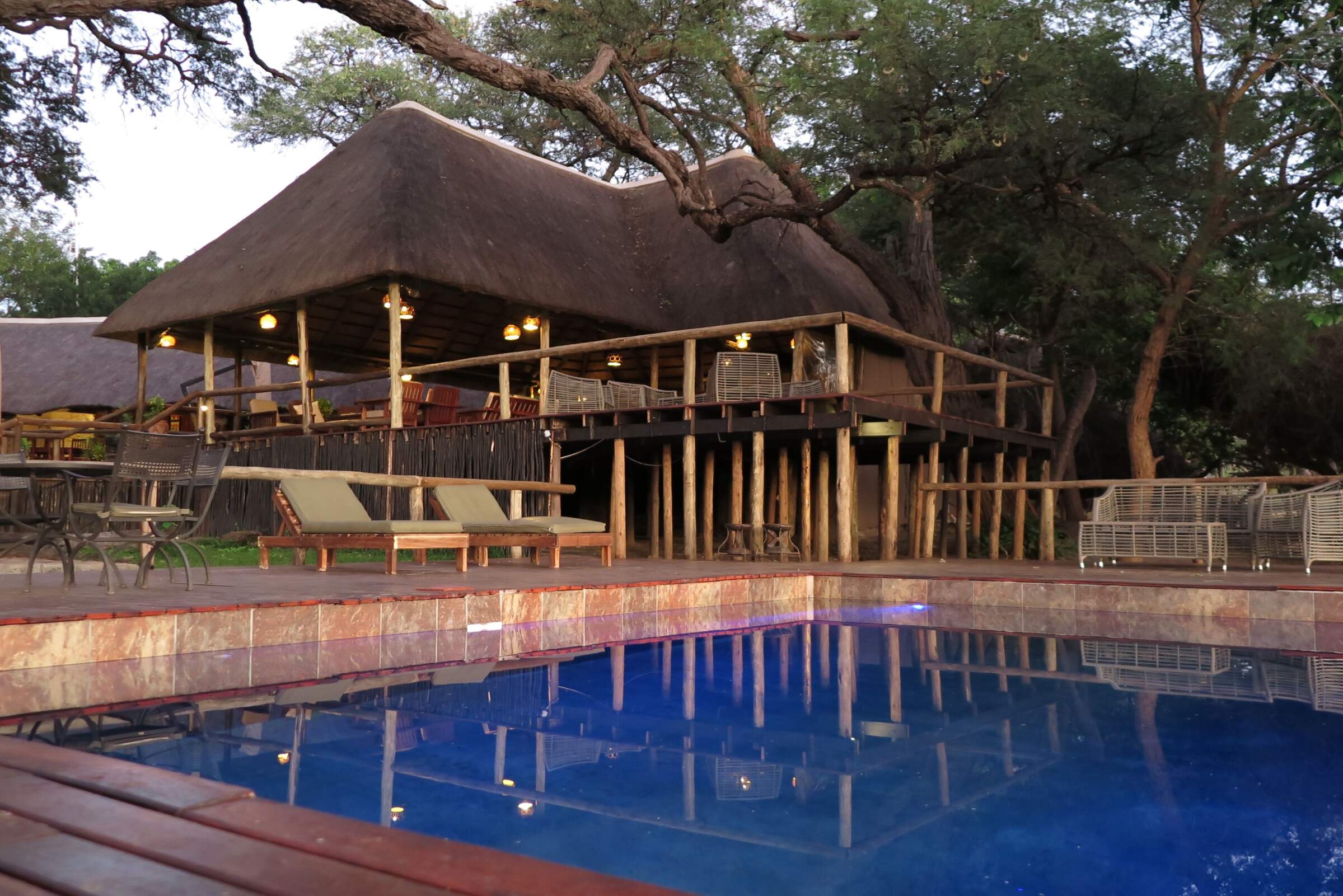
Elephant Valley Lodge
Elephant Valley Lodge is a lovely camp in a beautiful setting – sit in its hide and watch the wildlife come to drink at the waterhole. Activities focus on boating and drives in Chobe which - although very busy, and a long drive from the lodge – is very rich in wildlife.
When to go to Chobe National Park
Our month by month guide: What it's like to visit Chobe Chilwero in Chobe National Park
Jan
Feb
Mar
Apr
May
Jun
Jul
Aug
Sep
Oct
Nov
Dec
Chobe National Park in January
January marks the peak of the rainy season in Chobe National Park. Evening rains are typically brief but heavy, often accompanied by thunderstorms. While temperatures remain high, they are slightly cooler compared to earlier months. Wildlife tends to be more dispersed, making it harder to spot animals. Big game densities near the Chobe Riverfront are relatively low, but some resident species, like giraffes, are accustomed to vehicles and can appear so relaxed that they seem almost tame.
The Savuti Marsh becomes lush and green, attracting herbivores. Migratory birds abound throughout the park, with the Linyanti Marsh being particularly rich in birdlife during this period. January is an excellent time for visitors interested in lush landscapes and diverse birdlife. Lower rates at many lodges make this a good time to visit on a more moderate budget.
- Warm temperatures with occasional thunderstorms
- Birdlife at its most spectacular in Chobe
- Big game dispersed across the park
- Seek most wildlife away from the river
- Good availability and rates in Chobe’s lodges and camps
Our view
A good time to visit, with pros & cons
Weather in January
Chobe National Park in February
February in Chobe National Park is similar to January, with heavy rains most days, often towards evening. The landscape is green and alive, with insects and smaller animals more easily seen. Many birds and animals are raising their young, especially in the Linyanti and Savuti areas, making for lovely family group sightings. The Chobe River swells, creating a spectacular landscape and attracting diverse wildlife. However, the rains create pools and waterholes in the bush, which combined with thicker vegetation makes it harder to spot larger animals.
The Chobe Riverfront area still offers a good wildlife experience as although much big game has moved away, the animals that remain are often more relaxed. Boat cruises on the Chobe River provide excellent opportunities to observe wildlife from a different perspective. Visitor numbers remain low, with good rates and more availability in camps and lodges.
- Warm with occasional thunderstorms in Chobe
- Vegetation running riot; smaller wildlife thriving
- Many animals with young in the park
- Big game dispersed throughout Chobe
- Low visitor numbers, good camp availability
Our view
This is not a great time to visit
Weather in February
Chobe National Park in March
March typically marks the end of the main rainy season in Chobe National Park, with showers gradually tapering off. Many days are characterised by clear skies, intense sunshine, and rising temperatures. Short afternoon thunderstorms may still occur, while the park's landscape remains lush and vibrant. During this time, many birds and animals complete the process of raising their young. The Savuti Marsh area becomes particularly fascinating as predators exploit the vulnerability of the young and weaker prey.
The Chobe River levels start to stabilise, offering excellent boat safari opportunities. March can also be a good time to explore the Linyanti area, where many animals congregate as other water sources begin to dry up. With fewer visitors in most areas, rates are still be relatively low at lodges and safari camps.
- Variable weather, rains tailing off in Chobe
- Occasional small thunderstorms in the park
- Many animals finish raising young in Chobe
- Birdlife still spectacular along Chobe River
- Few tourists, often lower rates in lodges
Our view
A good time to visit, with pros & cons
Weather in March
Chobe National Park in April
During April, rains in Chobe National Park have usually stopped, though there may still be the odd afternoon downpour. This results in clear skies and a lovely green, lush landscape. Night-time temperatures start to drop, and are especially noticeable in the Savuti area. The Chobe Riverfront begins to flourish at this time, with the numbers of elephants and other wildlife gradually increasing along the river.
The Savuti region is a particular favourite during this time, with good predator-prey interactions on display. April marks the beginning of the shoulder season for many camps, so rates are on the rise but still relatively moderate. This is an excellent time for photographic safaris, as the air is clear and the landscape still green.
- Cooler evenings, occasional showers in Chobe
- Northern Chobe lush and green
- Good predator-prey interaction observable
- Savuti area best for wildlife viewing
- Popular shoulder season, relatively low rates
Our view
A good time to visit, with pros & cons
Weather in April
Chobe National Park in May
May is a very popular month to visit Chobe National Park, often the last month of the shoulder season before camp rates hit their peak. While there is very little chance of rain, the annual floods from Angola start to make their way through the northern part of the park. With cooler temperatures in the morning and evening, predator activity tends to be higher, especially in the Savuti and Linyanti areas.
The Chobe Riverfront becomes busier with wildlife as water dries up elsewhere, making it an excellent time for boat cruises on the Chobe River, where close encounters with elephants and other wildlife are a real treat. Away from the water, game drives in the park's interior become more rewarding as vegetation thins out and sightings improve. May is a favourite time for many visitors, and camp bookings throughout Chobe are start to be snapped up quickly.
- Cool mornings and evenings, little rain in Chobe
- Game viewing beginning to improve
- Predator activity increasing in Savuti
- Last month of shoulder season for most camps
- Availability decreases throughout Chobe
Our view
A very good time to visit
Weather in May
Chobe National Park in June
June marks the real start of the dry season in Chobe National Park. Temperatures are cool in the mornings and evenings, occasionally reaching freezing at night, and rising to 25-30°C/77-86°F during the day. This brings a certain clarity to the air and clear blue skies, making it a favourite month for serious photographers. Surface water and smaller natural waterholes are now drying up, leading wildlife to congregate around the remaining large water sources, including the Chobe River.
Visibility improves as the grass dies back, making game viewing very good throughout the park. The Savuti Channel and Linyanti areas see increased predator activity. June is an excellent time for both land and water-based safaris in Chobe, so not surprisingly, camp availability becomes scarce and rates climb.
- Warm days, cold nights in Chobe National Park
- Excellent conditions for wildlife photography
- Animals congregating at Chobe River
- Grasses dying back, improving visibility
- Peak season begins, rates increase
Our view
Fantastic: the very best time to visit
Weather in June
Chobe National Park in July
July in Chobe National Park offers cold evenings and mornings, combined with great daytime game viewing; this makes it one of the most popular times to visit. Vegetation is really thinning out, making game ever-easier to spot, with the few remaining waterholes attracting large congregations of wildlife species. The Chobe Riverfront is increasingly rewarding, with large herds of elephants and buffalo congregating along the river.
However, this area is now becoming busy with visitors. Game viewing is good in the Savuti area too, with frequent predator sightings. The Linyanti Marsh attracts diverse wildlife, including rare species like wild dogs. Camps are now very much into the peak season and tend to be full. Advance booking is essential for popular lodges and camps.
- Comfortable days, cold nights in Chobe
- Excellent game viewing as vegetation dies back
- Chobe Riverfront becomes busy with wildlife
- Private concessions offer exclusive experiences
- Peak season, higher rates in lodges
Our view
Fantastic: the very best time to visit
Weather in July
Chobe National Park in August
August is a favourite time for visiting Chobe National Park, as it aligns with the European and North American summer holidays. Camps tend to fill up quickly, so booking well in advance is essential. Daytime temperatures are pleasantly warm, perfect for outdoor activities; nights can be chilly, but the clear, cloudless skies also provide stunning opportunities for stargazing.
Wildlife is now congregating around the remaining water sources, especially along the Chobe River, making it a fantastic time for game viewing. If the Savuti Channel is flowing, it becomes a magnet for a variety of wildlife. This is one of the prime months to witness the park’s iconic large elephant herds. A boat cruise on the Chobe River offers up-close views of wildlife, including hippos and crocodiles.
With crystal-clear skies and animals congregating near water, August is an excellent time for photography safaris.
- Dry, warm days and cool nights in Chobe
- Spectacular stargazing opportunities
- Fantastic wildlife watching along Chobe River
- Large elephant herds visible at waterholes
- Peak season, high rates and limited availability
Our view
Fantastic: the very best time to visit
Weather in August
Chobe National Park in September
September is another very popular month to visit Chobe National Park. Days are warming up, while nights remain refreshingly cool. With drier conditions, most of the greenery has faded from the landscape, and photographers may find the haze from dust or smoke challenging, but it sets the stage for breathtaking sunsets.
Game viewing in September is exceptional, with large herds of elephants and buffalo gathering in the Chobe region. The Savuti and Linyanti areas also offer excellent predator sightings, and migratory birds begin to return, adding vibrant flashes of colour and adding to the park’s biodiversity.
Water-based activities on the Chobe River, such as boat cruises, are particularly rewarding, offering close-up views of animals coming to drink. Accommodation in camps and lodges is in high demand, with rates remaining at a premium, so early bookings are essential.
- Warmer days, cool nights in Chobe National Park
- One of the best months for wildlife viewing
- Large elephant and buffalo herds by Chobe River
- Hazy conditions create brilliant sunsets
- High season rates, many lodges and camps fully booked
Our view
Fantastic: the very best time to visit
Weather in September
Chobe National Park in October
October is typically the hottest and driest month in Chobe National Park. Towards the end of the month, the likelihood of rain increases, bringing a rise in humidity. The air is often dry and hazy, which can make photography more challenging, but the scarcity of water and vegetation leads to excellent opportunities for spotting big game. The Chobe Riverfront becomes a prime gathering spot for wildlife, particularly impressive herds of elephants.
In the Savuti area, predator-prey interactions are frequently observed around the remaining waterholes. Water levels are significantly lower by this time, meaning water-based activities like boating and fishing are limited to major tributaries. October is an ideal month for walking safaris, especially during the cooler morning hours. Despite the intense heat, it remains a prime time for wildlife enthusiasts eager to witness concentrated animal activity.
- Hot temperatures in Chobe, chance of late rain
- Excellent big game viewing opportunities
- Water activities limited as levels can be low
- Hazy conditions less ideal for photographers
- Final month of peak season in Chobe camps
Our view
Fantastic: the very best time to visit
Weather in October
Chobe National Park in November
November typically signals the end of the dry season in Chobe National Park. Rising temperatures bring increased humidity, leading to the arrival of the first rains. These showers are often brief but heavy, occurring in the late afternoon or at night, and can be quite dramatic. The rains provide a welcome relief, slightly cooling the temperatures and transforming the parched landscapes into vibrant shades of green.
As waterholes begin to replenish, wildlife starts to disperse across the park. Birdwatching is particularly rewarding this month, with the arrival of many migratory species, especially in the Linyanti Marsh area. The first half of November is a favourite among travellers, offering exceptional game viewing at more reasonable rates as Chobe enters its shoulder season.
- Hot days, increasing humidity in Chobe
- Heavy showers more likely as month progresses
- Wildlife watching good but less predictable
- Migrant birds arrive in Chobe National Park
- Shoulder season brings mid-range lodge rates
Our view
A good time to visit, with pros & cons
Weather in November
Chobe National Park in December
By December, the rains in Chobe National Park are underway, providing relief from the intense heat. While game viewing becomes more challenging as animals spread out, excellent sightings can still be enjoyed along the Chobe Riverfront and in the Savuti Marsh. The rains bring a vibrant transformation to the landscape, with fresh greenery creating beautiful scenery. This is also a fantastic time for bird enthusiasts, as numerous migratory species make their presence known.
The Linyanti area becomes especially lush, drawing a variety of wildlife. December is ideal for those eager to see newborn animals, as many species give birth during this time. Boat cruises on the Chobe River offer a refreshing way to observe wildlife and enjoy the scenery. With low-season rates at many camps, December is an appealing option for budget-conscious travellers looking to experience the park’s beauty.
- Temperatures falling from October-November highs
- High chance of rain in Chobe National Park
- Wildlife more dispersed across the park
- Game viewing more challenging but rewarding
- Typically low-season rates in Chobe camps
Our view
A good time to visit, with pros & cons
Weather in December

Looking for inspiration on where to travel next?
Visit our trip chooser to explore your options and find inspiration for your perfect African adventure
Inspire me